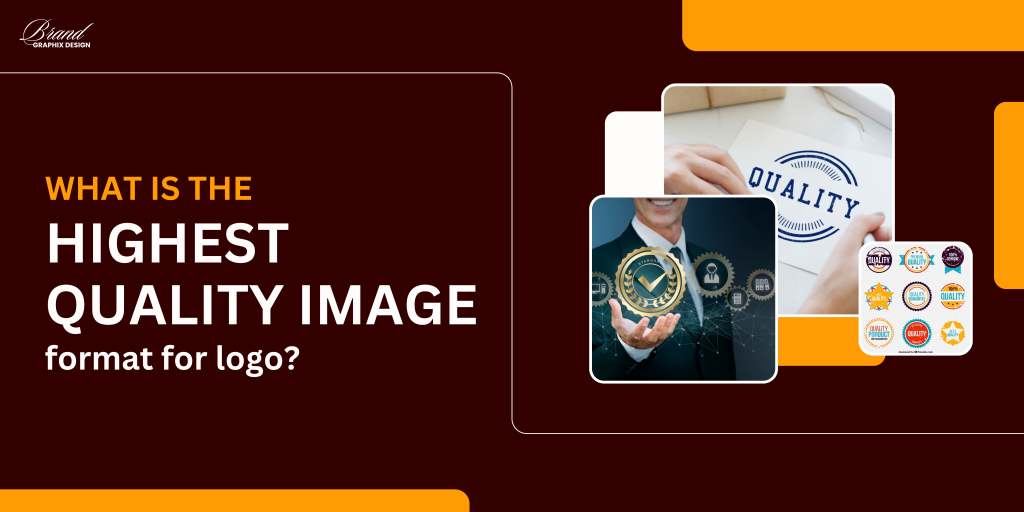What is the Highest Quality Image Format for a Logo?
When it comes to creating a logo for your brand, the image format you choose plays a significant role in determining its quality, scalability, and versatility. Logos are essential elements of your brand identity, and using the right image format can ensure that your logo looks crisp and professional across various platforms. Let’s explore the highest quality image formats for logos and why they matter.
1. SVG (Scalable Vector Graphics)
SVG is widely regarded as the best format for logos, particularly for modern web design and branding. The key advantage of SVG is that it is a vector format, meaning it can be scaled to any size without losing quality. Whether your logo is displayed on a tiny business card or a large billboard, an SVG file will maintain its crispness and clarity.
Why Choose SVG?
- Scalability: SVG images are resolution-independent, so they look sharp on any device, whether on a mobile screen or a large monitor.
- Small File Size: SVG files are generally smaller in size than other high-quality image formats, making them ideal for web use. This ensures fast loading times on websites.
- Transparency: SVG supports transparent backgrounds, which is essential for logos that need to be placed over different colored backgrounds.
- Accessibility and Editing: SVG files are easily editable in vector graphic software like Adobe Illustrator or free alternatives like Inkscape.
Best Use Cases: SVG is perfect for web design, mobile apps, and print materials where a logo needs to look great at any size.
2. PNG (Portable Network Graphics)
PNG is another excellent image format for logos, especially when transparency is necessary. Unlike JPG, which loses quality due to compression, PNG maintains high quality, and it supports transparent backgrounds.
Why Choose PNG?
- Lossless Compression: PNG files use lossless compression, meaning they don’t lose quality when saved. This makes PNG a great choice for logos that need to look sharp and clear.
- Transparency: PNG supports transparent backgrounds, which makes it versatile for layering over other images or backgrounds without a boxy appearance.
- Good for Web: PNG is widely supported across all browsers and is ideal for displaying logos on websites, social media, and email signatures.
Best Use Cases: PNG is ideal for digital uses like websites, presentations, and social media, where you need a logo with transparent backgrounds and high quality.
3. EPS (Encapsulated PostScript)
EPS is a vector-based file format that is commonly used for logos in print materials. It’s another great option for logos due to its scalability and ability to retain quality at any size. EPS files are compatible with most professional design software, including Adobe Illustrator.
Why Choose EPS?
- Scalability: Like SVG, EPS is a vector format, so it’s resolution-independent and can be resized without losing quality.
- Versatility in Print: EPS files are widely used in printing because they can be scaled to any size without pixelation, making them ideal for business cards, brochures, and large-format prints.
- Professional Design: EPS is the preferred format for graphic designers and printing companies due to its high-quality output.
Best Use Cases: EPS is best for print projects like business cards, flyers, banners, and other promotional materials.
4. PDF (Portable Document Format)
Although PDF is typically used for documents, it can also be a good option for logos, especially in vector format. PDF files preserve the quality and details of a logo, making them a viable choice for printing.
Why Choose PDF?
- Vector-Based: PDFs can contain vector images, meaning logos saved as PDFs can be scaled without losing quality.
- Widely Accepted: PDF is a universal file format that’s compatible with most platforms and devices.
- Preserved Quality: PDF files retain the integrity of the original design, making them ideal for high-quality printing.
Best Use Cases: PDF is great for both print and digital use, especially when you need to preserve the highest quality of your logo across multiple mediums.
5. JPG (Joint Photographic Experts Group)
JPG is a raster-based format that uses lossy compression, which means some quality is sacrificed in order to reduce file size. While JPG is not typically recommended for logos due to its compression, it can still be used in some situations.
Why Choose JPG?
- Small File Size: JPG files are much smaller in size compared to vector formats, which can be useful when file size is a concern.
- Widespread Compatibility: JPG is universally supported across all platforms, making it an easy format to share and view.
Best Use Cases: JPG is suitable for logos that don’t need transparency and when you need a smaller file size for social media, websites, or digital ads.
The best image format for your logo depends on how you plan to use it. For maximum quality and versatility, SVG is the top choice, especially for web and digital uses. PNG is a great alternative if you need a transparent background for online use. If your logo will be used primarily for print, EPS and PDF are excellent formats to ensure the best quality.
Ultimately, for the highest quality logo, it’s important to choose a format that allows for scalability, high resolution, and flexibility, whether it’s for web, mobile, or print. By selecting the right format, you ensure that your logo always looks professional and polished, no matter where it’s displayed.




